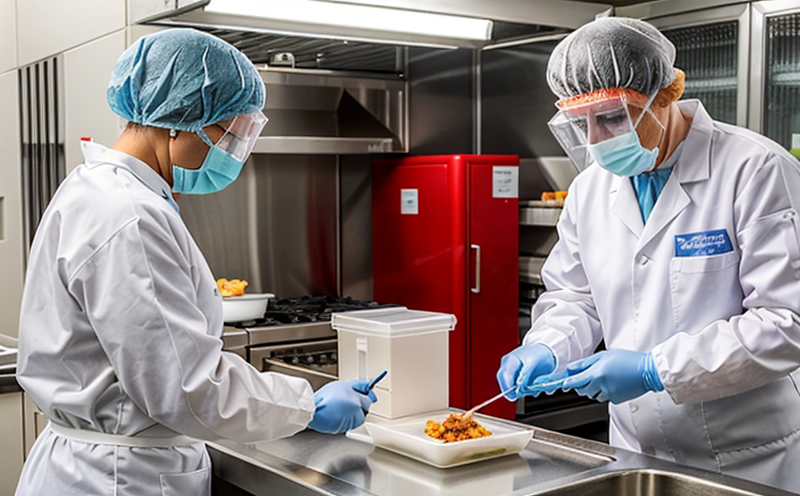Codex CAC/GL 96 Guidance on Risk Management of Viral Contamination in Food
The Codex Alimentarius Commission's CAC/GL 96 provides comprehensive guidance for the risk management of viral contamination in food. This document is a cornerstone for ensuring food safety and quality, particularly with regards to viruses that can compromise public health. The primary objective of CAC/GL 96 is to establish harmonized standards, guidelines, and codes of practice for foods traded internationally. Compliance with these guidelines ensures that the global food supply remains safe from viral contamination.
The guidance focuses on identifying potential sources of viral contamination in various stages of food production, processing, storage, and distribution. By implementing effective risk management strategies, stakeholders can prevent or mitigate the spread of viruses within the food chain. This approach includes the development of appropriate measures to control and monitor the presence of viruses at all levels.
The document emphasizes the importance of a multi-disciplinary approach involving microbiologists, virologists, epidemiologists, and food safety experts. These professionals work together to assess risks accurately and implement targeted interventions that minimize the likelihood of viral contamination. CAC/GL 96 provides a framework for this collaboration, ensuring that all parties involved are aligned in their efforts towards food safety.
The guidance covers various aspects of viral risk management, including:
- Identification of high-risk foods and processes
- Risk assessment methodologies
- Control measures to prevent contamination
- Monitoring systems for ongoing surveillance
- Response protocols in the event of an outbreak
The implementation of CAC/GL 96 is crucial for maintaining consumer trust and confidence. By adhering to these guidelines, food producers can demonstrate their commitment to safety and quality, which is essential for long-term success in the global market.
Compliance with CAC/GL 96 also facilitates international trade by ensuring that imported and exported foods meet stringent safety standards. This harmonization reduces barriers to trade and promotes economic growth across borders. However, it requires a robust infrastructure capable of supporting the implementation of these guidelines effectively.
The document is particularly relevant for food producers, processors, and distributors who must navigate complex regulatory environments. By following CAC/GL 96, they can ensure that their operations align with global best practices, thereby minimizing risks associated with viral contamination in food.
Industry Applications
The application of Codex CAC/GL 96 is broad and encompasses a wide range of industries within the food sector. This guidance is particularly important for:
- Food manufacturers producing ready-to-eat products
- Food service providers handling fresh produce or prepared meals
- Food processors involved in canning, freezing, or drying processes
- Distribution centers and retail outlets managing cold storage facilities
In each of these sectors, the risk of viral contamination is significant due to the nature of the products handled. By adhering to CAC/GL 96, companies can implement measures that effectively reduce this risk. For instance:
- Food manufacturers may adopt advanced hygiene practices in their production lines
- Food service providers could enhance sanitation protocols at their premises
- Processors might invest in state-of-the-art equipment for cleaning and sterilization
- Distribution centers can upgrade refrigeration systems to maintain optimal temperature conditions
The implementation of CAC/GL 96 also benefits consumers by ensuring that the food they purchase is safe from viral contamination. This trust-building measure enhances brand reputation and fosters customer loyalty.
Customer Impact and Satisfaction
The impact of Codex CAC/GL 96 on customers cannot be overstated. By adhering to these guidelines, food companies significantly enhance the safety and quality of their products, which directly translates into higher customer satisfaction. Consumers are increasingly concerned about the safety of the food they consume, and compliance with international standards like CAC/GL 96 reassures them that the products meet stringent safety criteria.
Companies that implement effective risk management strategies as outlined in CAC/GL 96 also benefit from improved operational efficiency. This is because:
- Proactive measures reduce the need for reactive interventions, such as recalls or withdrawals
- Investment in robust monitoring systems leads to early detection of potential issues
- Collaboration with experts ensures that all relevant factors are considered during risk assessment and management
The result is a more efficient operation with fewer disruptions. This, in turn, contributes to increased customer satisfaction as products consistently meet or exceed expectations.
Moreover, compliance with CAC/GL 96 can lead to enhanced market access opportunities for food companies. By adhering to international standards, they open doors to new markets and strengthen existing relationships with trading partners. This expanded reach further enhances customer satisfaction by providing a wider variety of safe and high-quality products.
International Acceptance and Recognition
The Codex CAC/GL 96 is widely accepted and recognized internationally, making it an essential tool for food safety management. Its broad acceptance is due to its comprehensive approach and alignment with global health priorities:
- It is endorsed by the World Health Organization (WHO) and the Food and Agriculture Organization of the United Nations (FAO).
- Countries around the world have incorporated CAC/GL 96 into their national food safety frameworks.
- The document is referenced in numerous international standards, including ISO/TS 22000:2018.
Recognition of CAC/GL 96 extends beyond governments and organizations. Many industry leaders consider compliance with this guidance as a benchmark for excellence in food safety management. This recognition translates into greater trust from consumers and stakeholders, which is crucial for maintaining competitive advantage in the global market.
The document's universal applicability underscores its importance in the context of international trade. By ensuring that all parties involved adhere to the same standards, CAC/GL 96 fosters consistency across borders. This consistency reduces confusion and misunderstandings between trading partners and ensures a level playing field for food companies worldwide.





